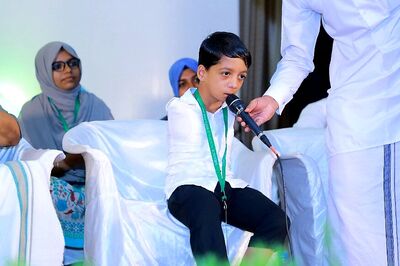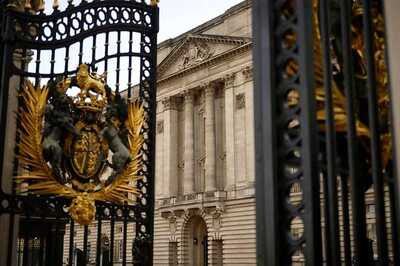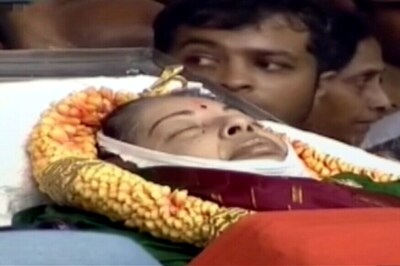
views
Yeh daagh daagh ujaalaa,
yeh shab ghazidaa seher,
woh intezaar tha jiska,
yeh woh seher to nahin
Faiz Ahmad Faiz’s poem Subh-e-Azadi brings back haunting memories on both sides of the border each Independence Day. The words perfectly capture the pain and disappointment of Partition just like Josh Malihabadi’s Matam-e-Azadi does with the famous words ‘Ai ham nafas! Fasana e Hindustan na pooch; Apna gala kharosh e tarranum se phat gaya; Talwar se bacha, to rag e gul se kat gaya (O friend, don’t ask me for the tale of Hindustan. Our throats were torn by the scratching of our songs. When we escaped the sword, we were beheaded by the veins of the rose)’.
August 15, 1947 has been immortalised in poems and songs penned by poets who saw the red dawn as a false freedom. According to author Rakshanda Jalil, who also translated the Josh Malihabadi verse mentioned above, “For some progressive poets, especially those who were members of the Communist Party, Partition and the freedom that came in its wake was a false freedom… Taking the party line, many poets spoke of the sense of inadequacy, the squandering of dreams that the dawn of freedom ushered in.”
The writings of those times struck a sombre note with the words still ringing in the collective consciousness of the two nations the Partition created.
“Even (poet) Majaz Lakhnawi lost some of his youthful ebullience by 1948. That’s when he wrote ‘Hindu Muslim Sikh Isai aman ke moti ro lenge; Khoon ki holi khel chuke hain, rang ke dhabbe dho lenge (Hindu Muslim Sikh and Christian will shed tears of peace; Having played Holi with blood, they will now wash off these stains)’,” adds Jalil.
The sorrow over Partition that “tainted the dawn of freedom” was quite palpable in such works, including those by Sahir Ludhianvi.
“Aao ki aaj gour karain is sawal par, dekhe the hum ne jo who haseen khwab kya hue? Daulat badhi toh mulk mein aflaas kyun badha, khushhaali e awaam ke asbab kya hue (Come and let us ponder on this question, whatever happened to all those beautiful dreams? The helpless cannot even afford a shroud to cover their nakedness. Whatever happened to those promises of silks and brocades?)” Jalil quotes from one of Ludhianvi’s verses.
In these, Ludhianvi is probing the dreams of a new nation, Jalil points out. “By the time India celebrated its first Republic Day, Sahir Ludhianvi’s disenchantment with the new republic was already palpable. In a poem titled Chhabees Janwary, Sahir invokes the beautiful dreams the nation had seen, dreams of a better tomorrow and asks about the promises.”
Differing with Jalil, literary critic and poet Ashok Vajpeyi takes a different view of the shab ghazeeda seher or the injured morning.
In a conversation with News18.com, Vajpeyi said, “Partition did divide the country by land, but failed to divide the culture, language, literature and arts. That’s one thing that’s not been clearly noticed.”
“Culture supersedes politics even after Partition. The approach of some governments has been to not promote the cultural exchange, but politics has been trumped by cultural legacy,” adds Vajpeyi.
He further says that writers like Faiz Ahmed Faiz, Intezar Hussain and Saadat Hasan Manto enjoyed the same level of popularity in India as the Indian writers. “Some of the most popular classical Sufi and Ghazal musicians of Pakistan were equally popular in India. It was not only Nusrat Fateh Ali Khan, but also Salamat, Nazakat and Mehdi Hasan...”
“Partition was a painful episode, but the two countries shared languages like Urdu, Punjabi and Sindhi that bind us together. Lahore was the culture capital of north India, which Delhi was not. Initially, people who came here tried to create Lahore in Delhi by making the Talkatora Garden along the lines of the Lawrence Garden in Lahore.”
Vajpeyi adds that works of Hindi writers like Nirmal Verma and Kamleshwar were widely published in Karachi.




















Comments
0 comment